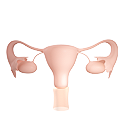1 & 2 weeks pregnant
 It may seem a bit strange, but the first week of your pregnancy is actually the beginning of your last menstrual period before you become pregnant. Why is that? Doctors and other health care professionals calculate your due date by counting 40 weeks from the start of your last cycle. That means they count your period as part of your pregnancy even though your baby hasn't been conceived yet. Conception typically occurs about two weeks after the start of your last menstrual period.
It may seem a bit strange, but the first week of your pregnancy is actually the beginning of your last menstrual period before you become pregnant. Why is that? Doctors and other health care professionals calculate your due date by counting 40 weeks from the start of your last cycle. That means they count your period as part of your pregnancy even though your baby hasn't been conceived yet. Conception typically occurs about two weeks after the start of your last menstrual period.
Preconception
During menstruation your body begins producing a hormone called follicle-stimulating hormone, which fosters development of an egg in your ovary. The egg matures within a small cavity in your ovary called a follicle. A few days later, after menstruation has ended, your body produces a hormone called Luteinizing hormone. It causes the follicle to swell and burst through the wall of your ovary releasing the egg. This is called ovulation. You have two ovaries, but in any given cycle, ovulation occurs from just one of them. As the egg moves slowly into your fallopian tube, which connects your ovary and uterus, it awaits a fertilizing sperm. Finger like structures at the junction between your ovary and fallopian tube, called Fimbriae, catch the egg when ovulation occurs, keeping it on the proper course.
If you have intercourse before or during this time, you can become pregnant. If fertilization doesn't occur, for whatever reason, the egg and the lining of your uterus will be shed through your menstrual period.
Fertilization
This is when it all begins. Your egg and your partner’s sperm unite to form a single cell - the starting point for an extraordinary chain of events. That microscopic cell will divide again and again, and in about 38 weeks, it will have grown into a new person made up of more than 2 trillion cells - your beautiful new baby girl or boy. The process begins when you and your partner have sexual intercourse. When he ejaculates, your partner releases into your vagina semen containing up to 1 billion sperm cells. Each sperm has a long, whip-like tail that propels it toward your egg.
Hundreds of millions of these sperm swim up through your reproductive tract. They travel from your vagina, up through the lower opening of your uterus (cervix), through your uterus and into your fallopian tube. Many sperm are lost along the way with only a fraction of the sperm reaching the fallopian tube. Fertilization occurs when a single sperm makes this journey successfully and penetrates the wall of your egg.
Your egg has a covering of nutrient cells called the corona radiata and a gelatinous shell called the zona pellucida. To fertilize your egg, your partner’s sperm must penetrate this covering. At this point, your egg is about 0.005 inch in diameter, too small to be seen. Up to 100 sperm may try to penetrate the wall of your egg, and several may begin to enter the outer egg capsule. But in the end, only one succeeds and enters the egg itself. After that, the membrane of the egg changes and all other sperm are locked out.
Occasionally, more than one follicle in an ovary matures and more than one egg is released into the fallopian tube. This can result in multiple births if each of the eggs is fertilized by a sperm. As the sperm penetrates to the center of your egg, the two cells merge to become a one-celled entity called a zygote.
<<< all weeks - 3 weeks pregnant >>>



